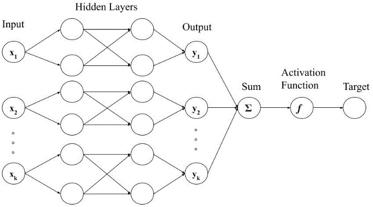Additive Neural Network Model in Analyzing Heart Disease Factors
菁英小记者 Ruoran Zhang 刘薇禛平 张禹



Abstract
This paper uses an Additive Neural Network model built with neural networks to analyze the key factors in determining the presence of heart disease. Identifying key factors in diagnosis
could enable more accurate and efficient diagnoses, and also prioritize health interven-tions that have the greatest effect. However, with many machine learning algorithms, it is of-ten difficult to isolate the contribution of each factor. An additive neural network that back propagates with the total loss is able to calculate each variables function in determining heart disease possibility.
1.Introduction
A lot of machine learning techniques are investigated to assist diagnosis and prediction of various diseases [1]. However, most of them are not able to calculate the correlation func-tion of each parameter and the possibility of having a disease.
The introduction of an additive model in Neural Network provides further insights in the interaction of each testing factor at the cost of a limitation of accuracy. The additive model establishes a neural network that is independent from other networks for each feature in a da-ta set. We shall be able to see some trends that align with empirical diagnosis.
2.Additive Models
Artificial neural network is a machine learning algorithm with an extensive history da-ting as far back as 1967 [4] while additive models were introduced relatively recently. As shown in Figure 1, an additive model constructs a separate neural network for each input fea-ture. The sum of the outputs from each independent network is taken to calculate the loss in accordance to one single target value.
The model enables us to plot and evaluate the effect of each feature on the final result. The summative pseudo code is given below.
3.Training Procedure
The additive neural network in this paper takes 12 inputs, including both categorical and quantitative data. The quantitative data are normalized so that the network is able to catch more detailed variations. Each input has its own network with 4 layers and 300 nodes in each layer. The weights in each network are initialized with Kaiming initialization that addresses rectifier nonlinearities.
As the target output is either 1 or 0, a sigmoid function defined by the following equation is applied:
σ(x) =1/(1 + exp(x))
The above function applied to the sum of outputs. The optimization of weights in ac-cordanceof the final loss employs Adam optimizer and happens in each network separately. Adam optimizer ”computes individual adaptive learning rates for different parameters from estimates of first and second moments of the gradients” [5]. The model ran 2000 epochs, reaching a final loss of 0.060.
4.Data
The data set used in this paper includes 303 patients diagnostic information. Each diag-nostic information contains 13 features that are medical predictors of heart disease. Each pa-tients data also includes the final target value, which is either 1 (presence of heart disease) or 0 (absence of heart disease).
5.Experimental Results
5.1 Results Analysis
The final loss after running 2000 epochs of the model is 0.060. From the plots given by the neural network, some important deciding factors of heart disease include chest pain type,
resting blood pressure, and cholesterol level. Some of the plots are shown below.
While most of the trends align with other research in the medical field, some of the func-tions are confounded by flaws in the data set, but can potentially provide insight into other aspects of the parameters.
5.2 Accuracy
Mapping results >0.5 as having a heart disease and results <0.5 as not having a heart disease, the model is able to reach a 89.6% accuracy in the training set with 300 inputs and 81.1% accuracy on the testing set which has 53 inputs.
6.Conclusion
An Additive Neural Network model not only performs better than some non- additive models in analyzing the patients information but also gives insights into the relationship be-tween each parameter and the diagnosis of heart disease. This additive model can be applied to other diagnoses that are based on multiple test results and contributing factors and can po-tentially improve the efficiency and accuracy of such diagnosis.
References
[1]Chen, H.-L., Huang, C.-C., Yu, X.-G., Xu, X., Sun, X., Wang, G.,and Wang, S.-J. An ef-ficient diagnosis system for detection of parkin-sons disease using fuzzy k-nearest neighbor approach.
[2]Detrano, R., Janosi, A., Steinbrunn, W., Pfisterer, M., Schmid, J.-J., Sandhu, S., Guppy, K. H., Lee, S., and Froelicher, V. In-
[3]He, K., Zhang, X., Ren, S., and Sun, J. Delving deep into rectifiers: Surpassing human-level performance on imagenet classification.
[4]Kingma, D. P., and Ba, J. Adam: A method for stochastic optimization.
[5]Lou, Y., Caruana, R., and Gehrke, J. Intelligible models for classifica- tion and regres-sion.
姓名:Ruoran (Zora) Zhang
年齡:17岁
城市:Palo Alto
就读学校:Henry M Gunn High School
年级:12年级
目标专业:数据科学
人工智能在许多领域都有着无限的潜能。抱着对于机器学习在医学方面应用的好奇,我开始了解不同的机器学习算法。本篇文章探索了神经网络的进阶——可加性神经网络 (Ad-ditive Neural Network Model),以及其在一套心脏病数据中的表现。从阅读相关论文,到运行python代码进一步改进模型,再到撰写论文报告,我不仅为model的成功运行感到高兴,还加深了许多统计学及机器学习的知识。

